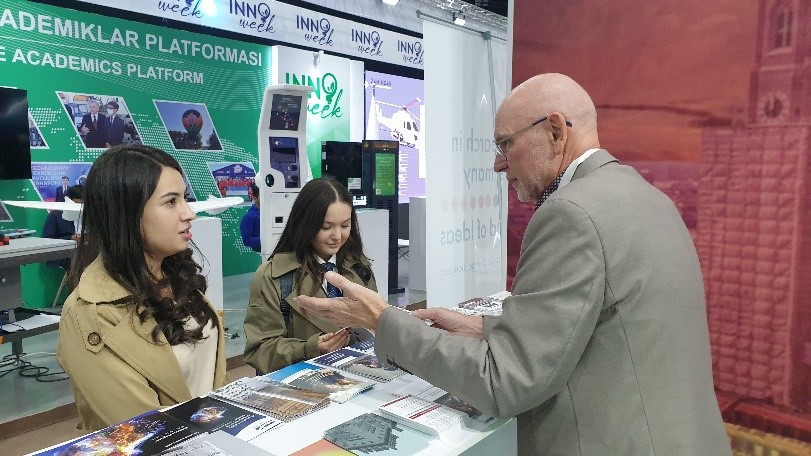Decent work and economic growth
Responsible consumption and production
Partnerships for the goals
Coordinator: G.E.O.S. Ingenieurgesellschaft mbH
Contact Person: Dr. René Kahnt
Address: Schwarze Kiefern 2, 09633 Halsbrücke
Phone: +49 3731369407
Email: r.kahnt(at)geosfreiberg.de
Project partners
- Martin-Luther-Universität Halle-Wittenberg
- Dimap-Spectral GmbH
- CBM Gesellschaft für Consulting, Business und Management mbH
Project partners in Uzbekistan und Kyrgyzstan
- GMIT - Deutsch-Mongolische Hochschule für Rohstoffe und Technologie
- Erdenet Mining Corporation
- Erdenet Institut of Technology
ADRIANA - Remote Sensing-based Detection of Industrial Recyclables in Mining Tailings
The global demand for raw materials is increasing steadily, which is why the topics of recycling and the efficient use of valuable residual material streams are becoming increasingly important. In the German-Mongolian research project ADRIANA, innovative remote sensing technology is being used in conjunction with the possibilities of 3D deposit modelling in order to harness the valuable material potential of an industrial setting basin. This is a settling basin for the deposition of residues from copper ore processing in Erdenet, Mongolia.
Ore preparation from scrap materials
Ore processing produces residues which are usually deposited in the form of sludge ponds or dumps. These deposits sometimes contain a considerable amount of residual recyclables. Economic use of these deposits for recovering valuable materials is considered possible, but is currently only established in a few exceptional cases. In order to make this a reality, it is necessary to know as much as possible about the recyclable content of the deposits in order to be able to evaluate economic feasibility.

The central component of the ADRIANA project is airborne remote sensing of a tailing settling basin (residues) from copper ore processing. The project aims to investigate how innovative methods of remote sensing can contribute to the exploration of the recycling potential of settling basins and comparable anthropogenic deposits, and to what extent these methods can complement conventional exploration and reservoir modelling methods. In order to determine the usable value potential of tailings deposits using the example of the tailings plant in Erdenet, ADRIANA will apply innovative airborne remote sensing methods and incorporate the results into 3D resource modelling together with existing data and conventional exploration results. In addition, treatment technology for deposited tailings will be developed and tested. Overall, exploration will be made more effective and economic assessments will be faster and more effective.
Innovative approaches / methodology and procedures
An important project objective is the testing of modern remote sensing technologies. The technique to be tested involves both the latest hyperspectral and hyperthermal sensors as well as newly developed polarimetric hyperspectral sensors. The selection of sensors should be optimised for comparable issues. Furthermore, an optimised workflow for processing and evaluation of the collected data will be developed within the scope of the project.
The remote sensing results are to be combined with those of conventional exploration. For this purpose, additional holes will be drilled in the tailings body and sampled for the chemical and mineralogical analysis of the tailings. The conventional research programme will also be optimised according to the characteristics of an anthropogenic tailing deposit. The combination of the results of remote sensing and conventional exploration will be carried out using 3D resource modelling. The procedure for this will be developed within the framework of the project.
Parallel to the exploratory methodology, the processing of the deposited tailings will be tested. On a laboratory scale, it will be investigated whether copper recovery by means of reprocessing with optimised procedures is technically possible. The developed deposit model should be used to determine the quantity and quality of suitable tailing varieties. This will also make statements on the economy possible.

Partners
The project is coordinated by GEOS Ingenieurgesellschaft. Martin Luther University, a German university, the German-Mongolian Institute for Resources and Technology (GMIT), a Mongolian university, Erdenet Mining Company (EMC), a Mongolian mining operation, and EiT Institute of Technology (named after Sh.Otgonbileg), a Mongolian educational and research institute, are involved in the project along with CBM Gesellschaft for Consulting, Business and Management mbH and Dimap-Spectral GmbH, two additional medium-sized German engineering companies.
The project is divided into work packages, each headed by a project partner. The main focuses are distributed as follows:
- GEOS Ingeniergesellschaft mbH: Project coordination, data research, resource modelling
- Martin-Luther University Halle-Wittenberg: Optimisation of remote sensing, data processing and evaluation
- Dimap-Spectral GmbH,: Preparation and execution of aerial surveys, data processing
- GMIT: Processing technology
- EMC Erdenet Mining Company: Provision of data, drilling, processing technology
- EiT: Data provision, processing technology
- CBM: Economic, environmental and safety studies
